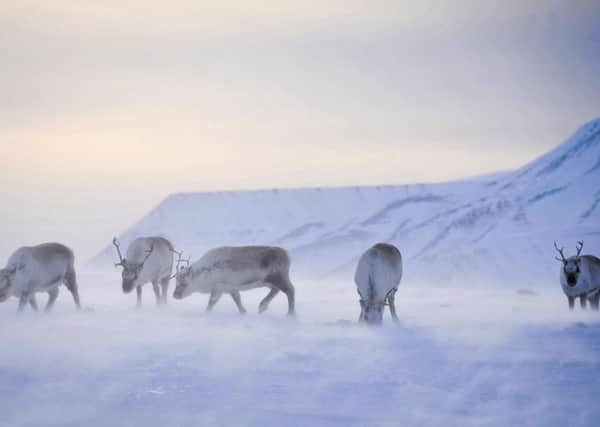Reindeer's role in protecting North Pole from climate change


By eating up Arctic shrubs, reindeer make the surface of the ground more reflective and increase the amount of solar radiation bouncing back into space.
This boost in “albedo” - reflectivity of the Earth’s surface - is potentially big enough to make a difference to the impact of global warming in the far north.
Advertisement
Hide AdAdvertisement
Hide AdLead researcher Dr Mariska te Beest, from Umea University in Sweden, said: “Our theory was that heavy grazing by reindeer increases summer albedo, through a reduction in shrub height, abundance and leaf area index (LAI).
“The effect reindeer grazing can have on albedo and energy balances is potentially large enough to be regionally important. It also points towards herbivore management being a possible tool to combat future warming.
“Most of the Arctic tundra is grazed by either domesticated or wild reindeer, so this is an important finding.”
The study combined land surface computer simulations with measurements of albedo and vegetation cover in Reisadalen, Norway.
Advertisement
Hide AdAdvertisement
Hide AdReindeer activity was estimated by recording levels of vegetation trampling and dung collection.
Dr te Beest said: “We found that high densities of reindeer changed Arctic tundra vegetation by decreasing shrub abundance. This resulted in corresponding shifts in LAI, canopy height and .. the amount of live green vegetation.
“These pronounced changes in vegetation led in a substantial increase in albedo across the growing season. Our modelling results showed this increase in albedo would result in a corresponding decrease in net radiation and latent and sensible heat fluxes - indicating that heavily grazed sites absorbed less radiation.
“Our results show that reindeer have a potential cooling effect on climate, by changing the summer albedo. Although the estimated differences might appear small, they are large enough to have consequences for the regional energy balance.”
The findings are published in the journal Environmental Research Letters.